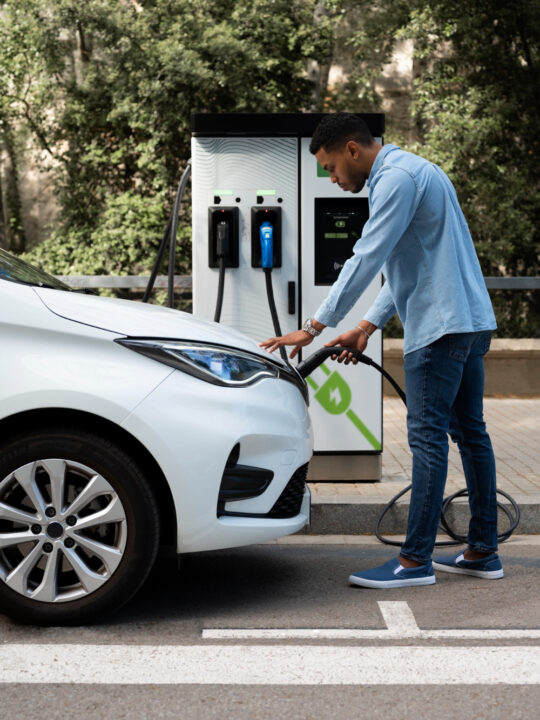 In more than half of the country, operating a truck is the most common profession. You may think, given the relatively low volume of trucks you see on the freeway, that trucking isn’t popular where you live.
In more than half of the country, operating a truck is the most common profession. You may think, given the relatively low volume of trucks you see on the freeway, that trucking isn’t popular where you live.
What few people understand is that trucks of various sizes and functions are included in most truck-driving metrics.
If you’re unaware of the different types of commercial trucks out there and would like to learn about them for curiosity-sake or for the sake of possibly starting a new career/business, keep reading. Below, we share nine truck types that you can use to generate an income.
Table of Contents
1. Pick-Up Trucks
There are several non-commercial pick-up truck drivers out there. Still, what a pickup truck is designed for more than anything is getting work done.
To that end, pick-up trucks are used for everything from towing vehicles to assisting in the transportation of supplies.
Recent advances in pick-up trucks have made this vehicle more fuel-conscious and even all-electric in the case of models like Tesla’s Cybertruck.
2. Tow-Trucks
When your car gets a flat or you need commercial truck delivery to help you get a vehicle from one part of the country to another, you might call a tow-truck. Tow-trucks come in various sizes and are rated to pull a wide range of load capacities.
The average tow-truck driver in the United States gets paid $53,000. Therefore, this profession represents a relatively lucrative living for those that can get their hands on the money required to buy their own truck and start their own business.
3. Car Transporters
When cars arrive at ports after being sent from foreign manufacturers and need to get transported to dealerships, car transporters are called in. Car transporters are types of commercial trucks that feature two decks, each of which can accommodate about seven cars.
Truck drivers that operate car transporters usually work directly for companies as employees. In some cases, car transporters can be owner-operators but gaining the connections required to get consistent work moving large batches of cars can be difficult.
4. Cement Trucks
Cement trucks are a staple in the truck arsenal of large-scale contracting companies. These trucks are characterized by the large, rotating cement mixer they have on their backs.
Trucks that carry cement may require a special license to operate as the skills required to transport cement and distribute it are unique.
5. Refrigerated Trucks
Refrigerated or “reefer” trucks look very similar to standard dry-van trucks (more on them later). The key difference for this truck type is that their trailer has a powerful refrigerator fixed to it which keeps cargo fresh in transit.
Refrigerator trucks are used by grocery stores to transfer inventory from suppliers to store shelves. They’re also used by farms to deliver goods to grocers.
Given the niche nature of refrigerated trucks, owner-operators can charge a premium to pull loads.
6. Mobile Cranes
Large cranes that are used for the construction of buildings and bridges require special machinery to operate. Small-scale projects though (putting up telephone poles, moving logs, etc.), often use “mobile cranes”.
Mobile cranes are small trucks that have a crane built where there would typically be a trailer. These trucks are capable of pulling about 13 to 70 tonnes.
Given the flexibility that mobile cranes offer, these trucks tend to be a hot commodity in cities with limited space. As a mobile crane owner, you can make money by performing crane services or by renting out your hydraulic truck crane for sale to private and public entities.
7. Tankers
When gasoline needs to get transported, the types of commercial trucks that get called on to get the job done are tankers. Tankers are trucks that pull cylinder trailers which are designed to hold large amounts of liquid.
These trailers are capable of dumping their contents through detachable hoses which make for easy delivery of fuel to gas stations.
Like cement trucks, driving tankers will likely require special licensure given these truck’s unique qualities and the flammable cargo they often pull.
8. Flatbeds
Flatbed trucks are roughly 53-foot, open-air trailers being pulled by a standard tractor. These open-air trucks tend to pull materials that are nominally affected by adverse weather.
Flatbeds are usually commissioned to pull loads locally since hauling open-air loads over long distances can be risky, especially when moving through territories that feature steep inclines.
9. Dry-Vans
Just like its flatbed cousin, dry-vans are characterized by a roughly 53-foot trailer pulled by a standard tractor. The big difference with this truck configuration is that trailers are enclosed.
Dry-vans are the most easily identifiable commercial truck that you’ll see while driving down the highway. When it comes to the transportation of commercial goods, few trucks get called on more frequently.
Which Types of Commercial Trucks Will You Use to Make Your Living?
Several types of commercial trucks are capable of providing owners with the means to make a decent living. Which truck you choose will come down to your comfort with driving and willingness to get special certifications.
No matter which truck you choose to invest in, be sure you do your diligence to understand personal and governmental needs before making your purchase. There are unique truck regulations that exist in each state which may make certain vehicles illegal to operate.
Review all requirements, particularly those having to do with environmental restrictions, so you can be sure you won’t run into unplanned additional expenses down the road.
For more insight on various business niches, check out more of the content on our blog!







